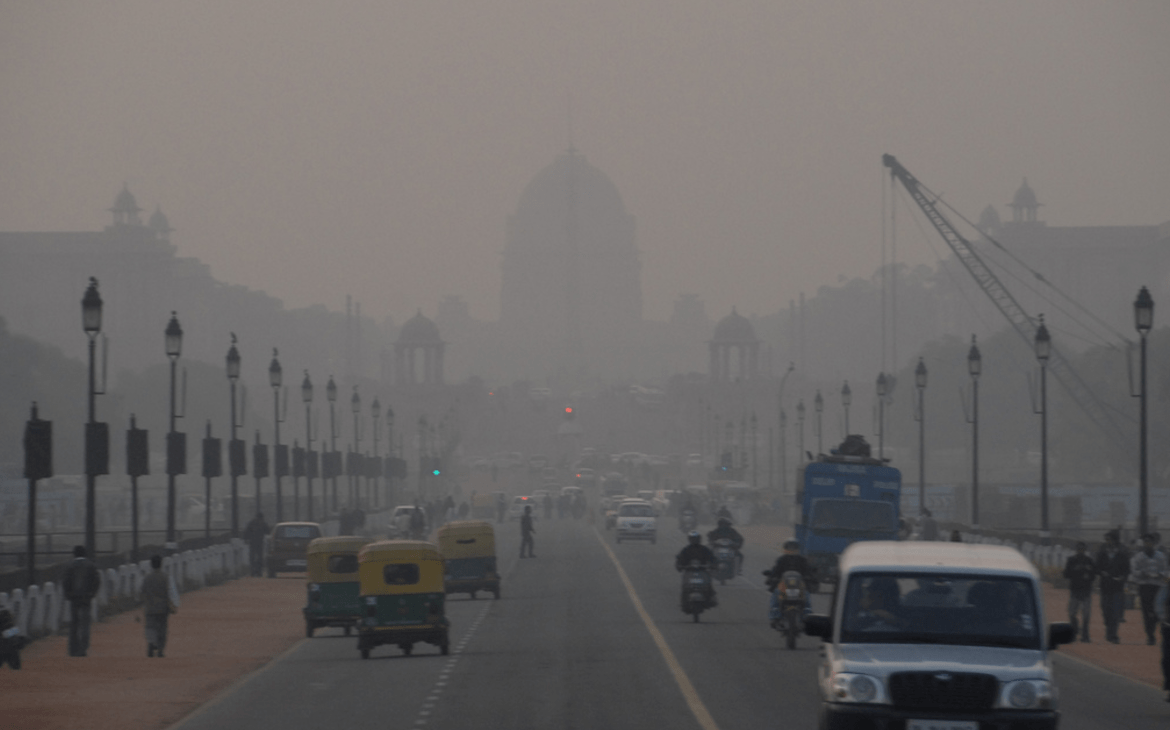Residents of the Indian capital Delhi woke up this morning to record-breaking smog suffocating the city. Millions of people last night set off fireworks to celebrate Diwali – the Hindu festival of light – but revelers are paying the price today as air pollutants in some areas reached over 30 times the level recommended by the World Health Organization.
Indians shared photos on social media of streets buried in grey clouds, and car bonnets and bridges emerging at odd angles from the smoke. One twitter user wrote ‘That grey smog is everywhere. My throat is scratchy all the time’ – the impact of perhaps millions of dollars of firework smoke on Delhi’s streets. In preparation for the festival, the Hindustan Times even made an interactive guide ‘How toxic are your favourite firecrackers’. It pointed out that a single ‘ladi’ or firecracker could make the air around a user 104 times worse.

Pollution and environmental degradation are big concerns in India. In 2014 Delhi was ranked the most polluted city in the world by the World Health Organization. The so-called megacity has a population of 16 million people – many of whom are paying the price for India’s industrialization. A toxic mix of industry, high car usage, limited sewer infrastructure, and rapidly growing population generate a thick haze over the city that almost never disappears. Poverty and geography don’t help the situation – residents burn rubbish on cold nights to stay warm whilst the landlocked position of Delhi means that there few sources of fresh air to replace contaminants.
The local environment is also suffering. The Yamuna River flows into Delhi clean and blue having originated in the calm glacial heights of the Himalayas. By the time it leaves the city, tons of chemicals and dyes from factories have poisoned the river, creating floating stinking icebergs of waste – as photographed by National Geographic. In 2010, one Indian scientist declared the river ‘dead’.
The human impact of this pollution is devastating. As anyone who has walked around a major city knows, poor air quality can leave people with streaming eyes and shortness of breath at best – at worst, it causes fatal health problems. In May this year, research found that air pollution in India is contributing to more than half a million premature deaths annually.
The Indian government has taken some steps to address this crisis. In 2014 Prime Minister Narendra Modi announced a national ‘Clean India Mission’ campaign, and regulations have been suggested to ban the burning of waste and restrict the use of diesel cars by government employees. In a now infamous proposition in Delhi, cars were restricted from driving in the city according to their number plates – even-numbered plates on even dates, odd-numbered plates on odd dates. But the impact of these measures seems to have been limited.
According to AFP, around 60-70% of the smoke causing this latest smog came from firecrackers. As some Indians have pointed out, this smoke will dissipate in the coming days, but the long-term contributors – industry, cars and environmental degradation – require much more serious attention.
